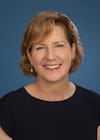As a marketing professional with 30 years of experience, I’ve seen few changes as significant as our recent shift in how we approach senior living digital marketing.
The Problem with Volume-Based Lead Generation
 When I started in marketing at Village On The Isle four years ago, we were fielding a lot of leads—but they weren’t the right ones. Our approach at the time was primarily volume-oriented and not particularly targeted. Our numbers were big, but they weren’t qualified prospects.
When I started in marketing at Village On The Isle four years ago, we were fielding a lot of leads—but they weren’t the right ones. Our approach at the time was primarily volume-oriented and not particularly targeted. Our numbers were big, but they weren’t qualified prospects.
Carol, who handles all our initial lead responses, would reach out to these “leads” only to discover they had no idea why they were being contacted about senior living—many were job seekers and even teenagers who had accidentally filled out our forms. These unqualified digital leads cluttered our database and—much worse—drained valuable staff resources that could be better directed toward serving genuine prospects.
The Turning Point: Quality Over Quantity
It was time for a change, and the breakthrough came when we shifted our senior living digital marketing strategy from volume to quality.
That switch was a game changer.
Today, we receive fewer leads, but they’re significantly more valuable. People contacting us now:
- Actually know who we are!
- Are age appropriate and a financial fit for our community
- Have a genuine interest in senior living
This quality-focused approach dramatically improved the efficiency of our sales process. Now, our digital leads turn into an appointment much more frequently—a stark contrast to the “tire kickers” we used to waste time pursuing.
What Makes a Good Digital Marketing Partner?
If I could offer just one piece of advice to my peers who are struggling with digital marketing, it would be this: Find a really good partner who specializes in this area.
What makes a good partnership? Here’s what transformed our digital marketing efforts:
- They listen – When we explained our frustrations with lead quality, our partner immediately worked to address the issue. A good partner doesn’t just nod and continue doing the same thing; they make meaningful changes.
- They communicate clearly – Digital marketing for senior living communities can be filled with complex terminology and analytics that easily lead you down a rabbit hole. A good partner translates these complexities into plain speak, providing clear summaries that highlight what matters.
- They set appropriate expectations – When we began refining our digital strategy, we were counseled that improvement would be a slow and steady process. Having this perspective was invaluable because we understood this was normal and could trust the process.
- They’re responsive – Whenever we’ve had issues with our website or digital campaigns, they’ve responded immediately. Having a partner who treats your concerns with urgency makes all the difference.
- This “isn’t their first rodeo” – It’s one thing to listen well, but our partner knew what to do with the feedback. It’s important to find someone who has the depth of experience to understand the dynamics behind your frustrations and to fix them.
A Collaborative Approach
I’ve learned one more thing about effective digital marketing; it requires active participation from both sides. Our weekly lead reports, along with my team’s detailed feedback on lead quality, help continually refine the approach. This collaborative process allows us to identify trends and make adjustments quickly.
Advice for My Fellow Marketing Directors
If you’re a marketing professional without the bandwidth to keep up with the volume of rapid changes in the digital arena, here’s what I’ve learned:
- Get a good partner – Find a senior living marketing agency that treats your business as if it were their own. We work with Love & Company, and the expertise its team brings to our business has been the driving force in the success of our digital marketing.
- Educate yourself – Take time to learn the basics so you can ask informed questions and understand the strategic recommendations being made.
- Take responsibility for providing feedback – Be involved in reviewing leads and providing honest feedback about their quality. This information is crucial for refining your digital strategy.
- Trust the process – Digital marketing improvements don’t happen overnight. Be patient and trust that a well-executed strategy will yield results over time.
- Build a relationship based on trust and respect – The best partnerships are those where both sides can be honest, direct and work together toward common goals without finger-pointing.
Senior living digital marketing can be a productive and rewarding part of your marketing mix. A good partner will make all the difference in the world; for me, that partner was Love & Company. My point is, with the right partner and approach, digital marketing can change from a time-consuming frustration to a valuable lead generation tool, delivering qualified senior living prospects who are genuinely interested in what your community has to offer.




